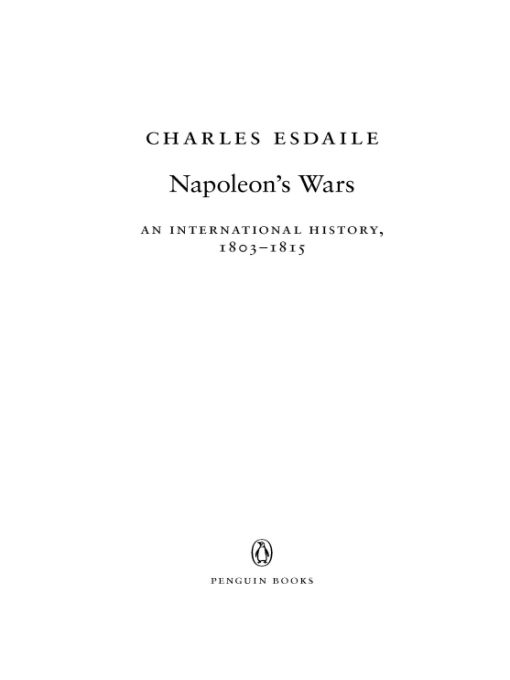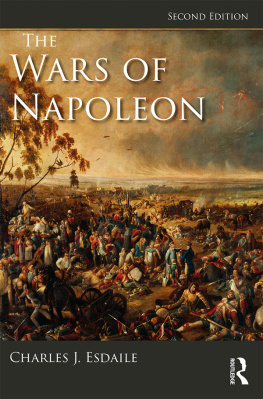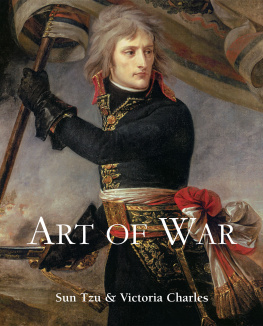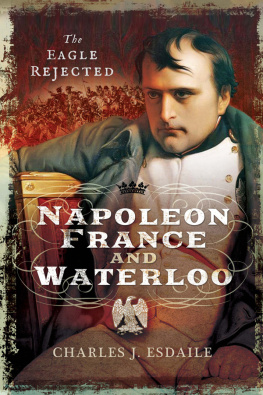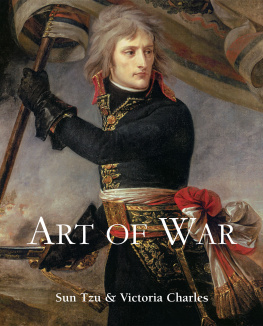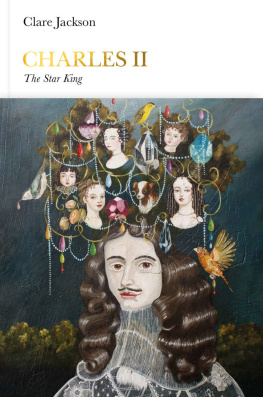Charles Esdaile is one of Britains foremost Napoleonic historians. He is professor in history at the University of Liverpool and the author of The Peninsular War: A New History and Spain in the Liberal Age, among other books. He lives near Formby, England.
Napoleon Bonaparte as 1st Consul, copy after a lost portrait by Robert Lefevre, 1803, in the Muse du Chteau de Versailles (photo: The Art Archive / Dagli Orti).
Napoleon Giving Orders before the Battle of Austerlitz, 2nd December 1805, 1808, by Antoine Charles Horace Vernet in the Muse du Chteau de Versailles (photo: Lauros/Giraudon/The Bridgeman Art Library).
The Result of the Day of the Three Emperors, caricature drawn after the battle of Austerlitz by French school (nineteenth century) in the Bibliothque Nationale, Paris (photo: Lauros/Giraudon/ The Bridgeman Art Library).
The Fall of Nelson by Denis Dighton, early nineteenth century National Maritime Museum, London.
Duckworths Action off San Domingo, 6th February 1806, by Nicholas Pocock, 1808. National Maritime Museum, London. The French Army Pulling Down the Rossbach Column, 18thOctober 1806 (detail) by Pierre Vafflard, 1810, in the Muse du Chteau de Versailles (photo: Lauros / Giraudon / The Bridgeman Art Library).
Entry of Napoleon I into Berlin, 27th October 1806, by 1810 Charles Meynier, ,1810 in the Muse du Chteau de Versailles (photo: Lauros/Giraudon/The Bridgeman Art Library).
Le Jeu des Quatre Coins ou Les Cinq Frres, 1808, French school, in a private collection (photo: The Bridgeman Art Library).
Napoleon receives Tsar Alexander I, Queen Louise and King Frederick William III of Prussia at Tilsit, July 6, 1807 (detail) by Nicholas Gosse in the Muse du Chteau de Versailles (photo: The Art Archive/Dagli Orti).
Boney and Talley, or The Corsican Carcass - Butchers Reckoning Day, by James Gillray, 1803, courtesy of the Warden and Scholars of New College, Oxford (photo: The Bridgeman Art Library).
The Second of May, Madrid, 1808, copy by A. Alvarez after an original by Manuel Castellano in the Municipal Museum of Madrid (photo: AISA, Barcelona).
The Rage of Napoleon, cartoon by early nineteenth century Spanish school (photo: AISA, Barcelona).
The Surrender of Bailen, 23rd July 1808 (detail) by Jos Casado del Alisal in the Prado, Madrid (photo: The Bridgeman Art Library).
Napoleon and Marie-Louise at the Launch of The Friedland at Antwerp, 2nd May 1810 (detail) by Mathieu Ignace van Bree in the Muse du Chteau de Versailles (photo: Lauros/Giraudon/ The Bridgeman Art Library).
British Sailors Boarding a Man-of-War, Hermione, 25 October 1799 (detail) by Fry and Sutherland after John Atkinson, . National Maritime Museum, London.
Ski-born troops at the Battle of Trangen, 1808, (detail) by Andreas Bloch, from Syv-aars-krigen for 17 Mai 1807-1814 (pub. 1914) by Henrik Angell (photo: courtesy Forsvarsmuseet, Oslo).
Portrait of Petrovic Karadjordje, 1816, by Vladimir Borovikovsky in the National Museum, Belgrade.
A Reception at the court of Selim III, in the Divan Court of the Topkapi Palace, Istanbul, Ottoman School, late eighteenth century (photo: The Art Archive/Topkapi Museum Istanbul / Dagli Orti).
Archduke Charles with his staff at the battle of Aspern-Essling, May 1809, , by Johann Peter Krafft in the Principality Collection, Vaduz, Liechtenstein (photo: akg-images).
Battle of Fuentes dOoro on 5th May 1811, from A Series of Views of the Principal Occurrences of the Campaigns in Spain and Portugal, 1812, by C. Turner, after Thomas St Clair, courtesy of the Council, National Army Museum, London (photo: The Bridgeman Art Library).
Episode from the War in Spain of 1812: Castalla, 1837, Jean-Charles Langlois in the Muse du Chteau du Versailles (photo: Photo RMN - Grard Blot).
The Battle for Smolensk 17 August 1812 by Albrecht Adam The State Hermitage Museum, St Petersburg (Inv OR-26980).
The Attack of Uvarovs cavalry at Borodino, 1812 (detail) by August Dezarno, The State Hermitage Museum, St Petersburg (Inv ERI- ).
The Crossing of the Beresina, 1812, c.1859, by January
Sucholdolski in the National Museum, Poznan (photo: akg-images).
Cossack Sports or the Platoff Hunt in Full Cry after French Game, , by William Elmes, in a private collection (photo: The
Bridgeman Art Library).
The Battle of Hanau, 1813, 1824 (detail) by Emile Jean Horace Vernet in the National Gallery, London (photo: The Bridgeman Art Library).
The Field of Waterloo as it appeared the Morning after the Memorable Battle of the 18th June 1815, 1817, engraved by M. Dubourg, after John Heaviside Clark, courtesy of the Council, National Army Museum, London (photo: The Bridgeman Art Library).
Every effort has been made to contact all copyright holders. The publishers will be glad to make good in future editions any errors or omissions brought to their attention.
Conqueror or liberator? Aggressor or victim? Sinner or saint? Man of blood or martyr? For two hundred years the argument with regard to Napoleon and his foreign policy has rumbled on unabated: it shows no sign of coming to an end, let alone being resolved. The reasons are perfectly clear. Throughout his career Napoleon had an eye on posterity, whilst his exile to the tiny island of St Helena provided him with ample opportunity literally to make history. Through his edited table-talk, through the interviews that he conceded to passing guests and travellers, and through the memoirs that he encouraged his companions to write, he reached out beyond the confines of grave and exile, and established a version of events which historians have found impossible to ignore.
More than any other figure in history, meanwhile, Napoleon has had the capacity to inspire a loyal band of followers to spend their lives in a crusade to defend his historical reputation. Armed with the holy scripture handed down on the mount of St Helena, and aided by a variety of political and historical fellow travellers, these latterday soldiers of the grande arme have for generation after generation variously sought to persuade the world that their hero desired only to defend the honour of France, to preserve the French Revolution, to liberate the rest of Europe from the chains of the ancien rgime and even to create a united Europe that would have been a precursor of the current European Union. By constantly returning to the charge, they have kept the debate alive and, amongst other things, made this book possible. Indeed, not just possible but essential: their arguments are so powerful and attractive that they have in effect won the battle for the public mind. People who have never heard of Brumaire, Marengo, Austerlitz or Wagram, nevertheless know that Napoleon somehow stands for liberty, progress and the advancement of the little man. Hence the triumph of Napoleon as brand name, and the prominence his figure has achieved in the world of advertising (and perhaps the cinema: Napoleon is not just one of the most written about personalities in history, but is also reputed to be the one that, after Jesus Christ, has been the most portrayed on film).

